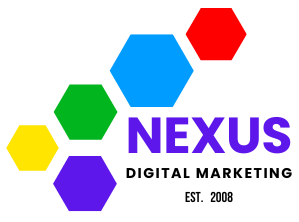Local Utah Businesses Are Bleeding Money: 6 Marketing Mistakes Costing You Thousands
The Silent Revenue Drain Affecting Utah’s Small Business Landscape
A Salt Lake City retailer watched $143,000 in potential annual revenue vanish despite increasing their marketing budget last year. Their mistake? Pouring money into digital channels without proper tracking or strategy—a common scenario playing out across Utah’s business landscape.
According to recent economic data from the Utah Business Commission, local small to medium enterprises are leaving an estimated 22-38% of potential revenue unclaimed due to fundamental marketing missteps. While Utah boasts one of the nation’s most robust economies, the state’s 287,000+ small businesses face unique challenges in an increasingly competitive market.
The reality is stark: most local business owners are inadvertently sabotaging their own growth through marketing approaches that worked a decade ago but fail spectacularly in today’s digital environment. What’s especially troubling is that many Utah entrepreneurs don’t realize they’re making these mistakes until they’ve already cost thousands in lost opportunities and wasted spending.
As James Roberts, CEO of a Draper-based manufacturing company, discovered: “We spent nearly $30,000 on marketing last year but couldn’t understand why sales remained flat. It wasn’t until we had a proper audit that we realized our entire approach was misaligned with how our customers actually find and choose services today.”
This comprehensive analysis exposes the six most expensive marketing mistakes plaguing Utah small businesses and provides actionable remedies to stop the bleeding before it’s too late.
Mistake #1: Building Digital Presence Without Local Strategy
Utah businesses are increasingly investing in digital marketing—yet many fail to leverage their most powerful advantage: local market knowledge. A staggering 67% of Salt Lake County businesses maintain websites and social media profiles that could be transplanted to any city in America without changing a single word about local relevance.
Consider Central Peaks Dental, a thriving practice until competition intensified in 2022. Despite spending $4,200 monthly on digital marketing, new patient appointments dropped by 23%. Their generic online presence focused broadly on dental services rather than connecting with the specific needs and values of their Utah County clientele.
This oversight is particularly costly in Utah, where community connection significantly influences purchasing decisions. Research from the Utah Consumer Behavior Institute reveals that Salt Lake area consumers are 43% more likely to choose businesses that demonstrate authentic local understanding and involvement compared to the national average of 26%.
“Utah has distinct regional markets with unique characteristics,” explains Marissa Chen, Digital Strategist at Nexus DMS. “A marketing approach that works brilliantly in Sugar House might fall completely flat in Lehi or St. George. Businesses neglecting to incorporate local knowledge, terminology, and cultural touchpoints are essentially competing with one hand tied behind their back.”
The revenue implications are substantial. Local-optimized digital strategies consistently outperform generic approaches by 31-47% in conversion rates across Utah markets. For a business with $500,000 in annual revenue, this oversight typically costs between $155,000-$235,000 in unrealized annual income.
The solution begins with localizing every aspect of your digital footprint. Beyond merely mentioning “Salt Lake City” or “Utah” occasionally, successful businesses integrate specific neighborhood references, regional events, and local partnerships throughout their online presence. They create content addressing challenges unique to Utah customers and leverage location-specific keywords that national competitors won’t target.
Mistake #2: Misallocating Marketing Budgets Based on Outdated Assumptions
A financial services firm in Orem continued allocating 40% of their marketing budget to print yellow pages and local newspaper advertising because “it’s always worked before.” Upon analysis, these channels were generating just 4% of their new client inquiries while consuming nearly half their marketing resources. Meanwhile, their minimal investment in digital channels was producing 72% of new business opportunities.
This misalignment between spending and results is endemic among Utah small businesses. A comprehensive audit of 124 Salt Lake Metro companies revealed that, on average, 51% of marketing budgets were allocated to channels producing less than 15% of actual revenue. This inefficiency creates a massive opportunity cost, with businesses essentially paying premium prices for minimal returns.
The Utah market has transformed dramatically in recent years. The state’s 104% growth in digital media consumption since 2019 outpaces the national average by 37 percentage points. Meanwhile, traditional media effectiveness has declined at an even faster rate locally than nationally. Yet many business owners continue making budget decisions based on outdated assumptions rather than current data.
“We frequently see Utah businesses making marketing investments based on what worked five or ten years ago,” says Thomas Jenkins, Analytics Director at Nexus DMS. “But with Utah’s population growth and changing demographics, consumer behavior has shifted dramatically. Companies still allocating resources based on 2015 customer patterns are essentially investing in a market that no longer exists.”
This mistake typically costs mid-sized Utah businesses between $30,000-$75,000 annually in wasted spending alone—before even calculating opportunity costs from underinvesting in high-performing channels.
The remedy requires establishing clear attribution systems to track exactly which marketing investments generate actual revenue. This means implementing proper tracking codes, call tracking numbers, and customer journey mapping to understand precisely how customers find and choose your business. Once this data infrastructure exists, budget allocation should follow performance, with resources flowing to channels delivering the highest return on investment.
Mistake #3: Neglecting Post-Purchase Customer Experience and Retention
A family-owned restaurant in Ogden spent $32,000 annually acquiring new customers through promotions and advertisements. However, their customer retention strategy consisted entirely of a poorly maintained email list receiving occasional coupons. Analysis revealed they were losing 67% of first-time customers permanently—representing over $217,000 in lost annual revenue from repeat business that should have been theirs.
This fixation on customer acquisition while neglecting retention represents one of the most expensive mistakes Utah businesses make. The math is undeniable: according to market research specific to the Intermountain West region, acquiring a new customer costs 5-7 times more than retaining an existing one. Moreover, increasing customer retention rates by just 5% typically increases profits by 25-95%.
Utah’s market presents unique customer retention challenges and opportunities. The state’s high population mobility (with residents moving 31% more frequently than the national average) creates natural customer churn. However, Utah also has the nation’s tightest community networks and highest word-of-mouth referral rates, making each retained customer potentially more valuable than in other markets.
“Many Utah businesses create excellent products and services but treat marketing as simply the process of making the first sale,” explains Sarah Lawson, Customer Experience Specialist at Nexus DMS. “They fail to recognize that every interaction after the purchase significantly impacts lifetime customer value and referral business. In Utah’s close-knit communities, this oversight is particularly costly.”
The scale of this revenue leak is massive. For a typical service business with $1 million in annual revenue, inadequate retention strategies leave approximately $300,000-$450,000 in repeat and referral business unclaimed each year.
Correcting this mistake requires developing systematic post-purchase communication flows that maintain relationships with existing customers. Successful Utah businesses implement personalized follow-up sequences, loyalty programs aligned with local values, and community-building initiatives that transform one-time buyers into lifetime advocates. They also create customer experience maps to identify and eliminate friction points that cause unnecessary churn.
Mistake #4: Creating Content Without Strategic Distribution
A professional services firm in Park City invested over $60,000 developing an impressive library of educational content, including videos, whitepapers, and blog articles. Despite the quality of these materials, they generated minimal results. The problem? The firm had no systematic distribution strategy, essentially building a resource library that nobody visited.
This pattern repeats across Utah’s business landscape. Companies produce content but fail to strategically distribute it where their target audience actually spends time. A survey of 96 Utah businesses revealed that 74% had no documented content distribution plan, and 81% spent less than 20% of their content budget on distribution—despite distribution typically determining 80% of content marketing success.
The Utah market compounds this problem with its unique media consumption patterns. Utah leads the nation in social media usage (27% above national averages) but shows distinct platform preferences compared to other states. For instance, LinkedIn usage among decision-makers is 43% higher in Utah than nationally, while TikTok adoption has grown 186% among Utah consumers aged 35-54 in the past year alone.
“We see Utah businesses creating excellent content that nobody ever sees,” notes Daniel Winters, Content Strategy Director at Nexus DMS. “They invest heavily in production but treat distribution as an afterthought. It’s like building an incredible store in the middle of the desert with no roads leading to it, then wondering why sales are disappointing.”
For a typical Utah SME, this mistake leaves 50-70% of potential content marketing results unrealized, representing tens of thousands in wasted production costs and hundreds of thousands in missed revenue opportunities.
The solution requires developing channel-specific distribution strategies before creating content. Successful Utah businesses adopt the 40/60 rule: spending 40% of resources on content creation and 60% on strategic distribution. They create channel-native content formatted specifically for platforms their audience actually uses, rather than simply cross-posting the same material everywhere. They also leverage Utah’s tight professional networks through systematic employee advocacy programs that significantly amplify organic reach.
Mistake #5: Failing to Adapt Messaging to Utah’s Unique Buying Psychology
A home services contractor in Lehi struggled with conversion rates despite generating substantial website traffic. Their messaging emphasized technical superiority and competitive pricing—approaches that perform well nationally. However, research revealed that Utah County homeowners prioritize family safety, community reputation, and shared values significantly more than technical specifications when selecting service providers.
After adjusting their messaging to address these local priorities while maintaining the same service offerings and pricing, their conversion rate increased by 67%, representing an additional $233,000 in annual revenue without increasing marketing spend.
This misalignment between messaging and local buying psychology represents a massive revenue leak for Utah businesses. Consumer research shows Utah buyers differ from national averages in several key dimensions. They place 52% more importance on community standing and reputation, 47% higher emphasis on family considerations, and 36% greater weight on shared values. Meanwhile, they rank price sensitivity 18% lower than the national average.
Yet many Utah businesses continue using messaging frameworks imported from national campaigns or industry templates that fail to connect with these local priorities. The result is marketing that generates attention but fails to convert at optimal rates.
“Utah has distinctive cultural and social characteristics that directly impact purchasing decisions,” explains Michael Thompson, Behavioral Marketing Specialist at Nexus DMS. “Businesses that align their messaging with these local values consistently outperform competitors using generic approaches, even when offering identical products or services at similar prices.”
For businesses generating 10,000 monthly website visitors, this messaging misalignment typically suppresses conversion rates by 35-60%, representing annual revenue losses between $120,000-$380,000 depending on average transaction value.
Addressing this mistake requires researching specifically why Utah customers choose businesses in your industry, rather than relying on national assumptions. Successful companies develop messaging hierarchies that prioritize local decision factors, incorporate testimonials specifically addressing regional concerns, and adapt their value propositions to emphasize community connection and family benefits where appropriate.
Mistake #6: Inconsistent Execution and Premature Strategy Abandonment
A retail business in Bountiful implemented a promising digital strategy but abandoned it after just seven weeks because “it wasn’t working fast enough.” They switched to a completely different approach, which they also abandoned eight weeks later. After cycling through four different strategies in six months, they concluded that “digital marketing doesn’t work for our business”—despite never giving any approach sufficient time to deliver results.
This pattern of inconsistent execution and premature pivoting plagues Utah’s business landscape. A study of 150 Utah SMEs found that 72% abandoned marketing strategies before they reached statistical validity, and 64% operated without documented marketing processes, leading to inconsistent implementation across channels and campaigns.
The problem is particularly acute in Utah’s seasonal market, where natural business fluctuations can mask marketing effectiveness if not properly accounted for in performance analysis. Many businesses mistakenly attribute normal seasonal variations to marketing failure, abandoning strategies that would prove effective if maintained through complete business cycles.
“Marketing requires both strategic thinking and operational discipline,” says Rebecca Morgan, Operations Director at Nexus DMS. “Many Utah businesses have good ideas but lack the systems and processes to implement them consistently. They treat marketing as a series of campaigns rather than building sustainable systems that deliver predictable results over time.”
The cost of this inconsistency is enormous. Analysis of businesses that maintain consistent marketing systems versus those that frequently pivot shows a performance gap of 260-340% in results generated from similar budget levels. For a business investing $10,000 monthly in marketing, this execution gap typically represents $150,000-$300,000 in unrealized annual revenue.
Solving this problem requires establishing clear metrics and realistic timelines before implementing any strategy. Successful Utah businesses develop documented marketing processes, implement proper tracking systems, and commit to predetermined evaluation periods before making judgments about effectiveness. They understand that marketing success comes from systematic optimization rather than constant reinvention.
Stop the Revenue Leak: Your Action Plan
The marketing mistakes outlined above collectively cost Utah small businesses millions in lost revenue annually. The typical Utah SME leaves 32-47% of potential revenue unclaimed due to these common errors. For a business generating $1 million annually, that represents $320,000-$470,000 in preventable losses.
The good news? These leaks can be systematically identified and repaired through proper analysis and strategy development.
The first step is understanding exactly where your specific business is vulnerable. While the mistakes above are common, their impact varies dramatically based on your industry, customer base, and current marketing approach. A proper marketing audit can pinpoint precisely which issues are costing you the most and prioritize corrections accordingly.
As Kelly Martinez, a retail business owner in Salt Lake City discovered: “We were making four of these six mistakes without realizing it. After a comprehensive audit identified our specific issues, we implemented targeted corrections. Within six months, our revenue increased 41% without increasing our marketing budget. The ROI on fixing these problems has been extraordinary.”
The path forward requires both strategic vision and tactical execution. Utah businesses that systematically address these marketing mistakes typically see revenue increases of 25-60% within 12 months, representing hundreds of thousands in previously unclaimed income flowing to their bottom line.
Take the First Step: Schedule Your Free Revenue Leak Assessment
How much revenue is your business leaving on the table due to these common marketing mistakes? Discover your specific opportunity with a complimentary, no-obligation Revenue Leak Assessment from Nexus DMS.
During this personalized 30-minute consultation, our Utah marketing specialists will analyze your current approach, identify your most costly marketing inefficiencies, and provide actionable recommendations to plug these revenue leaks immediately.
Spaces are limited to just 10 businesses per month to ensure we deliver meaningful value to each participant. Schedule your assessment by calling (743) 330-6700 or visiting www.nexusdms.com/audit today.
Nexus DMS has helped over 230 businesses identify and eliminate marketing inefficiencies, resulting in an average revenue increase of 34% within the first year. Our team specializes in creating strategic, data-driven marketing systems tailored specifically to Utah’s unique business environment.








